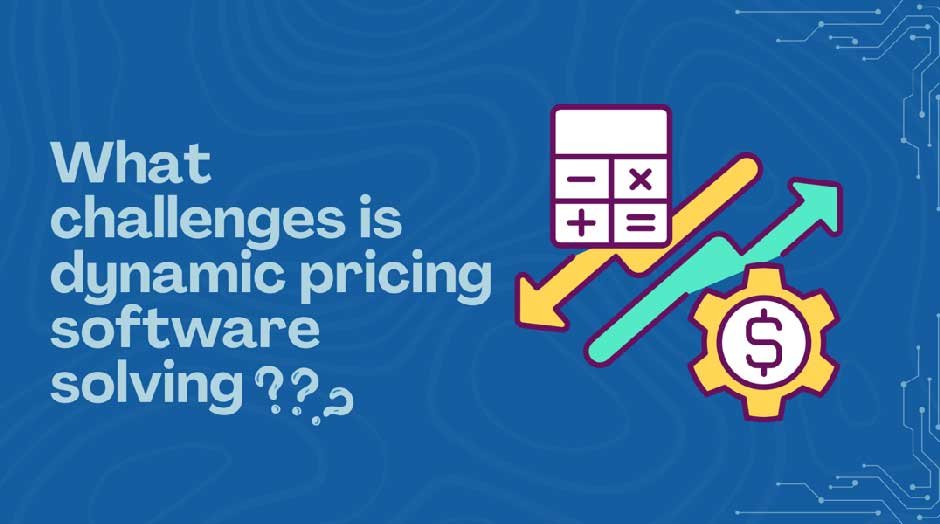Skip to the good bit
TogglePricing decisions can no longer be made once a quarter and forgotten. It’s a world where market conditions shift by the minute, and a dynamic pricing software ensures that your prices remain relevant at every moment. It performs dynamic price optimization sans human intervention, based on factors like competitor pricing, market conditions, demand, and more. Interestingly, it helps solve some plaguing challenges that pricing leaders are facing due to over-reliance on spreadsheets and disparate pricing sources. Here are 6 such challenges:
1: The Inability to Respond to Market Fluctuations Dynamically
Sudden changes in demand or even external events like influencer mentions can instantly impact buyer behavior. Relying on static pricing or manual adjustments means missing out on high-revenue opportunities.
Dynamic pricing software can detect this sudden spike in demand and automatically increase the price within pre-defined rules. Once demand stabilizes, it even brings the price back down.
For instance, imagine you are a retailer selling fitness gear at $25. Suddenly, a popular fitness influencer features your resistance bands. Demand surges overnight. Without dynamic pricing software automatically increasing the price, you may continue selling at the old price, leaving money on the table.

2: Poor Competitive Intelligence About Pricing
Most customers (82% to be precise) compare prices with your competitors before making a purchase. Even a minor price difference can sway their decision. Yet, many businesses operate with limited visibility into competitors’ pricing strategies. By the time a pricing team notices a shift in the competitor’s prices, it’s often too late to respond effectively. This lack of real-time competitive pricing data leads to two common pitfalls: overpricing and underpricing.
Dynamic pricing software continuously monitors competitors’ prices across platforms, aggregating data on similar or substitute products. It gives you the ability to react instantly to undercut and raise prices confidently when competition does the same or when they experience a stockout.
3: Manual pricing errors and inconsistencies
A small pricing mistake can often snowball into significant revenue loss, customer dissatisfaction, or even legal trouble. Companies not using dynamic pricing tools often end up leaving room for human error and inconsistencies. It is very common to find mistyped values or incorrect formulas in spreadsheets, leading to mispriced products.
For instance, who can forget the infamous incident where British Airways accidentally listed round-trip tickets from the U.S. to India for $40. The airline had to cancel hundreds of tickets, leading to complaints, bad publicity, and legal threats from angry customers. They had intended to file a $40 fare increase, but somewhere along the process, the plus sign was omitted due to a manual error, leading to the fare being listed as just $40 instead.
Dynamic pricing software avoids such situations by completely eliminating human interference, ensuring consistency and accuracy. Also, thanks to real-time syncing with inventory and sales data, it automatically adjusts prices based on stock levels, demand, sales velocity, etc. The best part – it supports audit trails that track every pricing change to meet internal governance or external compliance requirements.
4: Difficulty Managing Pricing in Large Product Catalogs
For businesses with vast product or service offerings, whether it’s a 10,000-SKU e-commerce store or a hotel chain with hundreds of properties, managing prices at scale becomes a logistical nightmare. The more complex the catalog, the harder it is to keep pricing aligned with demand, costs, competitor movements, and channel-specific strategies.
Dynamic pricing software automates and streamlines the entire pricing process, regardless of catalog size. It enables businesses to apply rules-based pricing across entire categories or product types. It also detects anomalies in pricing and makes real-time price updates across all the channels.
5: Limited Pricing Personalization
Not every buyer values your product in the same way. Yet many businesses end up adopting a pricing model that ignores buyer behavior, purchase intent, device used, geography, customer loyalty, etc. This lack of pricing personalization leads to missed revenue opportunities.
A dynamic pricing solution collects data from multiple touchpoints—browsing patterns, purchase history, geolocation, and more to segment users and offer personalized pricing. Here are some possible segments:
For example, price-sensitive shoppers identified through cart abandonment might receive a limited-time offer, while intent users (like those spending more time on product pages) can be shown slightly higher prices without affecting conversion rates.

6: Pricing Decisions Made Using Guesswork & Gut Feeling
Pricing decisions are often driven by intuition, guesswork, internal opinions, and outdated rules of thumb. While experience is indeed valuable, relying solely on gut feeling in fast-moving markets is risky. Without real-time insights into market trends and competitor moves, it becomes more of a gamble than a strategy.
Dynamic pricing software replaces guesswork with data. It provides detailed analytics, dashboards, and reporting tools to make informed choices. For instance, through real-time pricing performance dashboards, you will understand
- Which products are underperforming or exceeding revenue expectations?
- How sensitive customers are to price changes across different categories or SKUs.
- How does your pricing compare to similar products across competitors and marketplaces?
- Seasonal patterns and previous high-demand periods to optimize future pricing strategies
Wrap Up
By automating data analysis and offering real-time pricing insights, dynamic pricing software enables you to optimize revenue and free up valuable time to focus on delivering better customer experiences. As pricing data becomes increasingly complex, such solutions are emerging as a critical differentiator between businesses that merely keep pace and those that lead in their markets.







